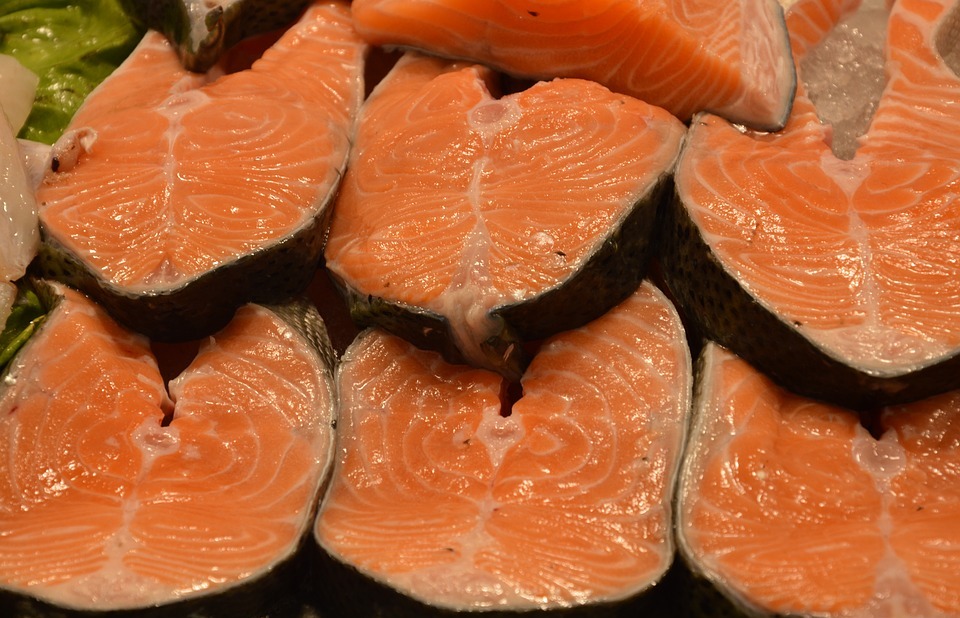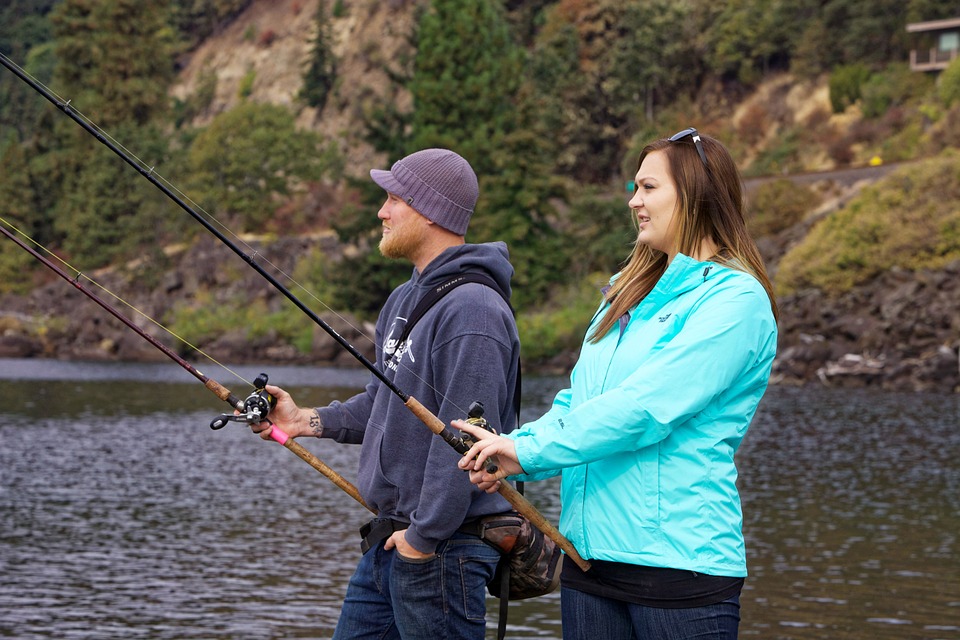This comprehensive guide delves into the question of whether dogs can safely enjoy salmon, a popular and nutritious fish. We'll explore the benefits, risks, and appropriate ways to incorporate salmon into your canine companion's diet. From understanding the nutritional value to addressing potential concerns, this article aims to provide dog owners with the knowledge necessary to make informed decisions about feeding salmon to their furry friends.
Part 1: The Nutritional Benefits of Salmon for Dogs

1.1 Rich in Omega-3 Fatty Acids
Salmon is renowned for its high content of omega-3 fatty acids, specifically EPA and DHA. These essential fatty acids play a vital role in maintaining a dog's overall health and well-being.
- Improved Coat and Skin: Omega-3s promote a healthy skin barrier and contribute to a shiny, lustrous coat, reducing dryness and shedding. This is particularly beneficial for dogs prone to skin conditions such as allergies or eczema.
- Enhanced Brain Function: DHA is crucial for optimal brain development and function, supporting cognitive abilities, memory, and learning. This is especially important for puppies and senior dogs who may experience cognitive decline.
- Joint Health: Omega-3s are known to reduce inflammation and improve joint health, potentially delaying the onset of arthritis. This can be particularly helpful for older dogs or breeds predisposed to joint issues.
- Cardiovascular Support: They can help regulate blood pressure and reduce the risk of heart disease. This is essential for maintaining overall cardiovascular health and longevity.
1.2 Protein Powerhouse
Salmon is an excellent source of high-quality protein, essential for building and repairing tissues, supporting muscle growth, and maintaining overall energy levels. This is particularly important for active dogs, puppies, and pregnant or nursing dogs who have increased protein requirements.
1.3 Vitamin and Mineral Riches
Salmon is a treasure trove of vitamins and minerals, including:
- Vitamin D: Essential for calcium absorption and bone health, promoting strong bones and preventing conditions like rickets.
- Vitamin B12: Crucial for red blood cell production and energy metabolism, supporting energy levels and overall vitality.
- Selenium: An antioxidant that protects cells from damage, helping to bolster the immune system and prevent age-related decline.
- Potassium: Important for muscle function and nerve transmission, contributing to proper muscle coordination and nervous system health.
Part 2: The Potential Risks of Feeding Salmon to Dogs

2.1 Bones and Skin
- Bones: Never feed cooked salmon bones to dogs. They can splinter and cause internal damage, leading to choking, digestive issues, or even life-threatening injuries.
- Skin: Some dogs may be allergic to salmon, displaying symptoms such as itching, rashes, or gastrointestinal upset. If you notice any such reactions after introducing salmon, discontinue feeding it and consult with your veterinarian.
2.2 Mercury Content
- Mercury Accumulation: Salmon can contain varying levels of mercury, a heavy metal that can be toxic in high concentrations, accumulating in the body over time and potentially leading to neurological damage.
- Fish Size and Age: Larger, older salmon tend to have higher mercury levels. Choosing smaller, younger fish can help reduce the risk of mercury exposure.
- Frequency and Portion Control: It's crucial to feed salmon in moderation and choose smaller, younger fish to minimise mercury exposure. Limiting the frequency and portion size helps minimize the potential buildup of mercury.
2.3 Parasites
- Raw Salmon Risks: Raw or undercooked salmon can harbour parasites that can be harmful to dogs, causing digestive upset or even more serious health complications.
- Freezing and Cooking: Freezing salmon at -20°C for at least 24 hours can kill most parasites, while thorough cooking is recommended for complete safety. Always cook salmon to an internal temperature of at least 145°F to ensure the destruction of parasites and bacteria.
Part 3: How to Safely Feed Salmon to Your Dog

3.1 Choose the Right Salmon
- Wild-Caught vs. Farmed: Wild-caught salmon is generally considered a healthier option, as it contains fewer contaminants and potentially less mercury. It is important to choose salmon sourced from sustainable fisheries.
- Fresh or Frozen: Fresh salmon is preferred, but frozen salmon can be a convenient alternative, ensuring it's properly stored. Frozen salmon should be thawed in the refrigerator or in cold water, not at room temperature.
- Skin and Bones: Always remove the skin and bones before feeding salmon to your dog. As mentioned before, bones are a choking hazard, and the skin can be difficult to digest.
3.2 Cooking Methods
- Grilled or Baked: These methods are recommended, as they allow for even cooking without adding excessive fats or oils. Grilling or baking also helps to eliminate any potential parasites.
- Avoid Seasonings: Do not use any seasonings, spices, or sauces that could be harmful to your dog. Garlic, onions, and salt are especially toxic to dogs. Choose plain salmon without any added flavours or additives.
3.3 Portion Control
- Moderate Consumption: Salmon should be considered a treat or occasional addition to your dog's diet, not a staple food. Feeding salmon too often can lead to an imbalance in their diet and potential health issues.
- Size and Breed: The appropriate portion size will vary based on your dog's size and activity level. A good rule of thumb is to offer a small piece, about the size of your dog's thumb, as a treat.
- Monitoring for Reactions: Start with a small amount and monitor your dog for any adverse reactions. Observe their behaviour and stool consistency for any signs of allergies or digestive upset.
Part 4: Salmon Treats for Dogs
4.1 Commercially Available Treats
- Variety of Options: Numerous commercially available dog treats feature salmon as a key ingredient, offering a convenient and tasty way to provide your dog with its nutritional benefits.
- Check Ingredients: Read the labels carefully to ensure the treats are safe and suitable for your dog. Look for treats with minimal additives, preservatives, and artificial colours or flavours.
- Quality Matters: Choose treats from reputable brands known for high-quality ingredients. Research and read reviews to ensure the treats are made with human-grade salmon and other healthy ingredients.
4.2 Homemade Salmon Treats
- Simple Recipe: Salmon can be incorporated into homemade dog treats, providing a nutritious and flavorful snack. You can find a variety of simple and easy-to-make recipes online.
- Online Resources: Numerous online recipes for salmon dog treats are available, catering to different dietary needs and preferences. You can find recipes for treats that are grain-free, hypoallergenic, or low-calorie.
- Safety Precautions: Ensure all ingredients are safe for dogs and properly cooked. Avoid using ingredients that are toxic to dogs, such as garlic, onions, or grapes. Make sure the treats are thoroughly cooked to eliminate any potential parasites or bacteria.
Part 5: FAQs
5.1 Can dogs eat raw salmon?
Feeding raw salmon to dogs poses a risk of parasites and potential bacterial contamination. It's generally recommended to cook salmon thoroughly for safety. While some people believe that raw food diets are beneficial for dogs, it's important to consult with a veterinarian experienced in raw feeding to ensure proper handling and preparation.
5.2 Is smoked salmon safe for dogs?
Smoked salmon can contain high levels of salt, which can be harmful to dogs in large quantities. Additionally, the smoking process may introduce preservatives and other additives that are not suitable for canine consumption. It's best to avoid feeding smoked salmon to your dog.
5.3 Can puppies eat salmon?
Puppies can benefit from the nutritional value of salmon, but it's important to introduce it gradually and in moderation. Start with small amounts and monitor for any signs of allergies or digestive upset. It's best to discuss any new foods with your veterinarian, especially for puppies, to ensure they are appropriate for their age and developmental stage.
5.4 Is salmon good for dogs with allergies?
Salmon is often a good protein source for dogs with allergies, especially those who are sensitive to common proteins like chicken or beef. However, it's crucial to consult with your veterinarian to determine if salmon is appropriate for your dog's specific allergy profile. Salmon allergies are possible, so introducing it slowly and monitoring for reactions is essential.
5.5 How often can dogs eat salmon?
Salmon should be considered an occasional treat or supplement to your dog's regular diet. One or two servings per week is generally considered safe, but it's important to adjust the frequency and portion size based on your dog's individual needs. Overfeeding salmon can lead to dietary imbalances, so moderation is key.
5.6 What if my dog eats salmon bones?
If your dog accidentally ingests salmon bones, it's essential to monitor them closely for signs of discomfort or choking. If they exhibit any symptoms, seek immediate veterinary attention. Signs of choking can include gagging, difficulty breathing, drooling, and pawing at the mouth.
5.7 Is canned salmon safe for dogs?
Canned salmon can be a safe option for dogs, but it's essential to choose varieties that are packed in water or brine, not oil. Oil-packed salmon can be high in fat and unhealthy for dogs. Read the label carefully to ensure it doesn't contain any added salt, spices, or preservatives that could be harmful.
5.8 Is it safe to feed salmon skin to dogs?
Salmon skin is actually a good source of omega-3 fatty acids and other nutrients. However, it can be difficult to digest for some dogs, so it's best to remove the skin before feeding the salmon to your dog.
Everyone is watching
-

Can Dogs Eat Bananas? A Guide to Safe Treats
DOGS & PUPPIESThis comprehensive guide will delve into the world of canine nutrition, focusing on the popular question: can ...
-

Can Dogs Eat Oranges? (Is It Safe or Toxic?)
DOGS & PUPPIESThis article delves into the question of whether dogs can safely consume oranges. We'll explore the nutrition...
-

Can Dogs Eat Grapes? The Shocking Truth About This Fruit
DOGS & PUPPIESThis article delves into the controversial topic of grapes and dogs, exploring the potential dangers associate...
-

Why Do Dogs Eat Poop? Understanding Coprophagia in Dogs
DOGS & PUPPIESThis article delves into the perplexing phenomenon of coprophagia, the act of eating faeces, in dogs. We explo...
-

Can Dogs Eat Shrimp? A Guide to Safety and Risks
DOGS & PUPPIESThis comprehensive guide dives into the world of shrimp and dogs, exploring the potential benefits and risks a...
